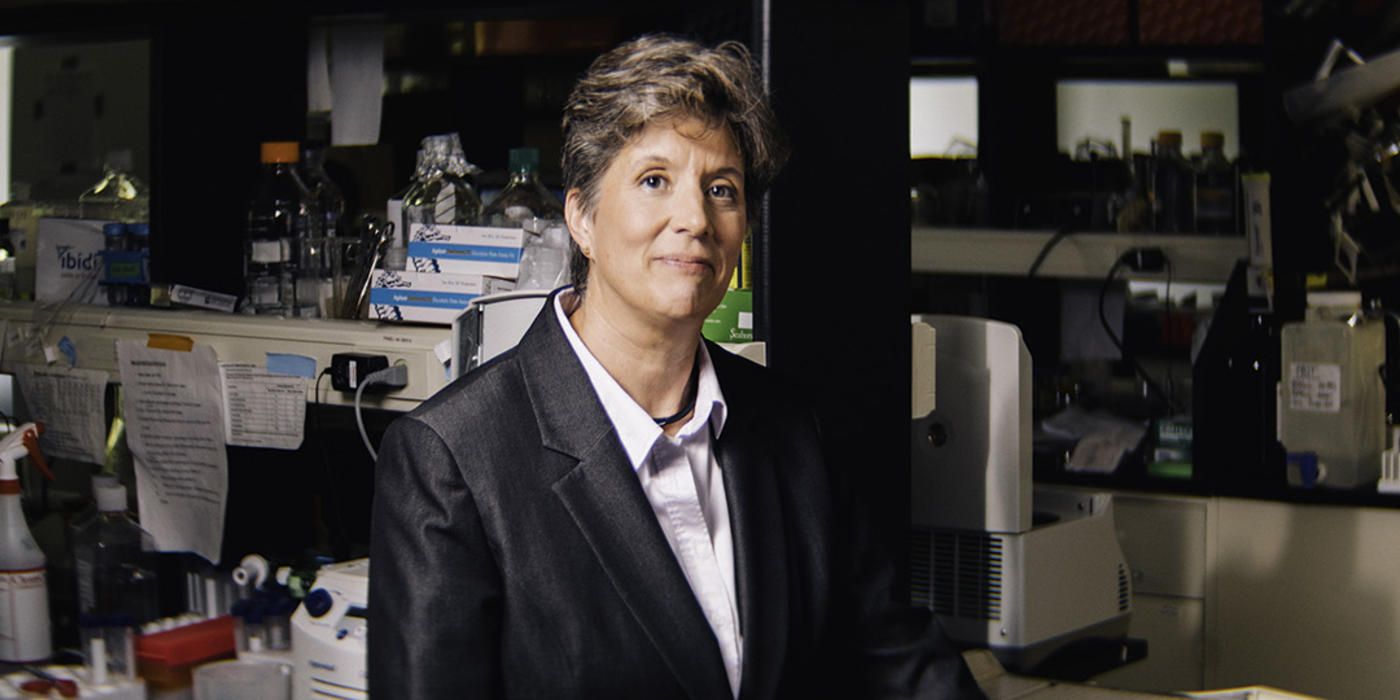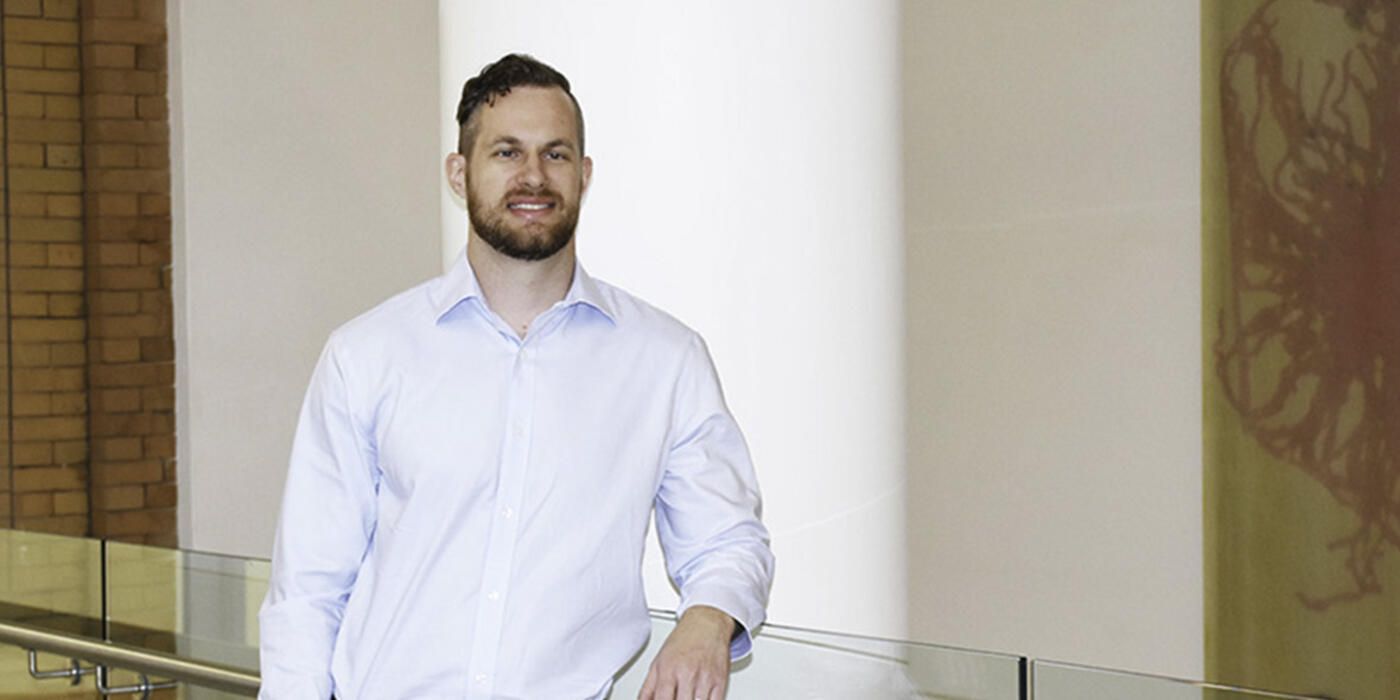How The Wistar Institute’s Dr. Dan Claiborne Engineers CAR T Cells to Fight HIV
Assistant professor Daniel Claiborne, Ph.D., pursues one of the hottest up-and-coming areas of research: CAR T cells, which are engineered immune cells designed to attack specific targets. Dr. Claiborne’s work focuses on HIV, and as Dr. Claiborne prepares to move his laboratory to Wistar’s new HIV Cure and Viral Diseases Center, we sat down with him to learn about how these cells can be used against one of the most notoriously difficult-to-treat viruses.
You’re researching CAR T cells as an anti-HIV tool, but why don’t our own bodies’ T cells fight against the virus?
At the very beginning of HIV infections, our T cells actually do a great job fighting the virus. During the acute stage of initial infection, you might see viral load in the millions — but that comes down fairly quickly thanks to T cells, which can reduce viral load by almost 100-fold down to the thousands. So our adaptive immune systems are very good at detecting and responding to viral threats — at first.
The core problem with HIV — impacting every facet of HIV cure research — is how aggressively the virus mutates, and that allows it to escape our adaptive immune response. Unfortunately, without interventions like antiretroviral therapy (ART), the course of the battle between mutating HIV and T cells tends to turn in favor of the virus.
When our lab engineers a CAR T cell design by telling it which receptors to express — which is how CAR Ts can be aimed at certain targets — we’re still fundamentally working with normal T cells; they just happen to be doing what we tell them rather than what the immune system tells them.
T cells themselves are quite potent immune agents — but ultimately, HIV poses a potent mutational challenge to them, whether they’re the T cells in your blood or the CAR T cells in the lab.
So it sounds like CART T cells can do only so much if the virus mutates. Is that correct?
I think so, yes — using CAR Ts alone, you could run into the same problems of the immune system, where the virus stays one step ahead.
CAR Ts offer a big advantage in the lab and show us how mutational escape plays out, which is critical to understanding HIV. We’re working to understand mutational escape patterns so that we can target multiple critical aspects of HIV to fight the virus more effectively.
HIV mutates a lot, but the virus isn’t limitless: there are weak points. CAR Ts allow us to identify and test different weak-point-targeting strategies in a systematic way. The thinking goes that attacking HIV at multiple key targets that also have restrained plasticity will cripple its ability to mutate quickly.
As the science matures, we’re learning more about how to design intricate CAR T models that can execute sophisticated antiviral strategies. Even now, as we’re designing CAR Ts with several different types of protein receptor all on the same cell, the field is advancing with new technologies that might make CAR Ts lower-priced and more effective. So yes, HIV is the same challenge it’s always been, but the progress we’re making toward actually stopping it is very real.
The HIV Cure and Viral Diseases Center mission is multi-pronged approaches against HIV. Do we know how well CAR T cells synergize with other anti-HIV treatments, like interferon and bispecifics?
We’re only just beginning to see clinical trial data of CAR Ts in patients with HIV — which is exciting, but also means we have work to do. It’s been a longer road to get CAR Ts in the clinic for HIV because a big part of the calculation on whether to do a clinical trial is risk vs. reward.
CAR T therapy received approval for cancer before anything else in large part because a lot of that clinical data came from individuals who didn’t respond to standard therapy; that’s a much different risk-reward calculation than someone living with HIV in 2024, who, even though they don’t have a cure, can still live a long, mostly healthy life thanks to ART.
As new clinical data from CAR T HIV trials are released, we’ll know more about CAR Ts’ dynamics in people living with HIV, and that will guide how we move forward with combination trials.
I suspect that yes, CAR Ts will do better in conjunction with other anti-HIV therapies than they will on their own. If there were a magic bullet for HIV, that would be great, but after 40+ years of research, I think any effective cure will require multiple angles of attack.
What excites you about the HIV Cure and Viral Diseases Center?
There’s a real feeling that we’re on the ground floor of something big here. A sense of, “we’re really going to commit to this endeavor.” How can you not get excited about that, as a scientist?
A cure for HIV is absolutely essential; living with the virus can present significant challenges to one’s long-term health. But beyond believing in the importance of a cure, which Dr. Luis Montaner has done an excellent job of speaking to, I think one of the big takeaways is in the name: HIV Cure and Viral Diseases Center.
Our decades of HIV research have taught us how to better fight viruses across the board. It makes intuitive sense: in going up against what might be the toughest challenge, you learn how to handle difficult challenges in this space. Researching HIV is a bit like jogging with a weighted backpack: it’s harder, but it makes you stronger. The HIV Cure and Viral Diseases Center doesn’t just come at a promising moment for HIV cure progress: we’re well-positioned to develop cure strategies for a variety of viruses and other chronic diseases.
Simultaneously, I’m excited about what this Center has the promise to be and what The Wistar Institute has already accomplished in HIV research. The collaborations and expertise we have are already remarkable. Everybody’s aligned on scientific progress as the guiding principle, and everything that follows from that — collaboration, research support, new ambitious endeavors like the HIV Cure and Viral Diseases Center — keeps us on the cutting edge. And that’s exactly where I want to be.








